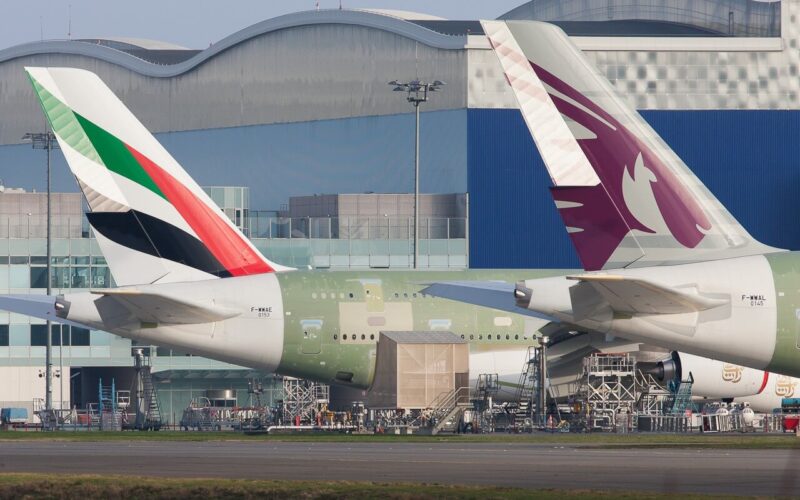Big three of the Middle East – Emirates, Etihad Airways and Qatar Airways – are amongst the best known airlines in the world and amongst the biggest rivals. COVID-19 epidemic only exemplified this rivalry, as each airline strived to announce a return to their pre-pandemic destinations. But how did their efforts fare against each other?
On March 25, 2020, Etihad Airways announced the suspension of their passenger services. A day later, Emirates airline operated their last pre-lockdown flight. For these two, the next months were full of cargo hauling and occasional repatriation flights, mostly employing airliners as impromptu transporters.
Qatar Airways went the other route. They reduced flight numbers by over two-thirds, but did not stop operations altogether, using remains of scheduled flights to fly home people who got stranded abroad, bring medical supplies and haul cargo – and sometimes, all of this together. As a result, come April, the airline proudly announced briefly becoming the world’s biggest airline, accounting for 17.8% of the global market.
Problems with data
It is difficult to figure out how many of Qatar’s April and May flights were passenger-focused and how many – dedicated purely to cargo. Although IATA confirmed their claimed position, the airline was operating just a fraction of their passenger capacity.
Nevertheless, when in mid-May other two airlines announced a slow return to their scheduled flights, Qatar already had a firm numerical advantage, flying to more than 30 airports weekly. Therefore the resumption of ME3’s services was not a fair fight, with Qatar Airways taking the lead early and doing everything it could to not let go.
And although this lead is firm, there is little certainty as to exact numbers. Open data, gathered from the company’s press releases, can hardly be trusted and seldom checked. On a number of occasions, announced service resumptions happened at different dates or did not happen at all, as can be evident by checking them against airports’ records. Of course, such checking was not feasible for every flight. Therefore, presented numbers should be taken as a mere approximation.
Firm lead, smaller loss
Yet, even an approximation can provide substantial insights. Although Qatar’s lead was firm through the whole period and still remains substantial, the airline has lost most of its initial lead. Having almost equal numbers of destinations before the crisis ‒ 160 against Emirates’ 159 in 2019 – it is struggling to fight against worldwide travel restrictions, even despite best efforts to ensure passenger safety, and thus is risking to lose its current standing.
Etihad Airways chose to restart its operations in batches, announcing a number of new flights in June and remaining stagnant until early September. Coupled with the airline’s long-running financial problems and a network that was shrinking even before the crisis, the future is uncertain for Etihad.
The same can be confirmed by another metric – according to IATA’s data, United Arab Emirates is going to lose almost $26 billion thanks to reduced airlines’ (mostly Emirates and Etihad) operations. Qatar’s $3 billion loss, although substantial, looks comparatively tame.

